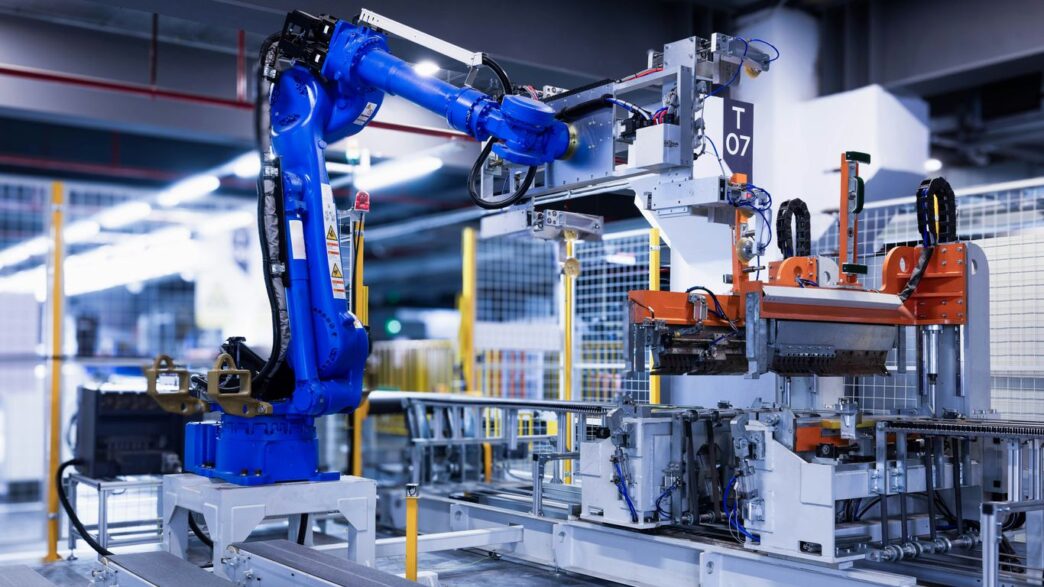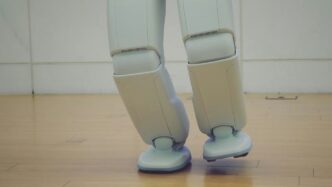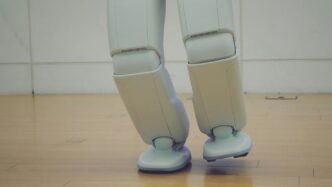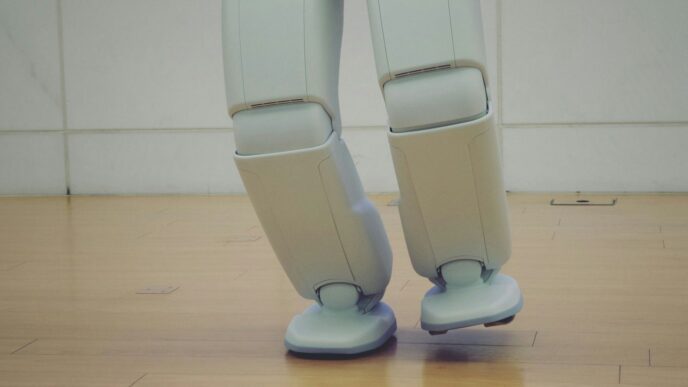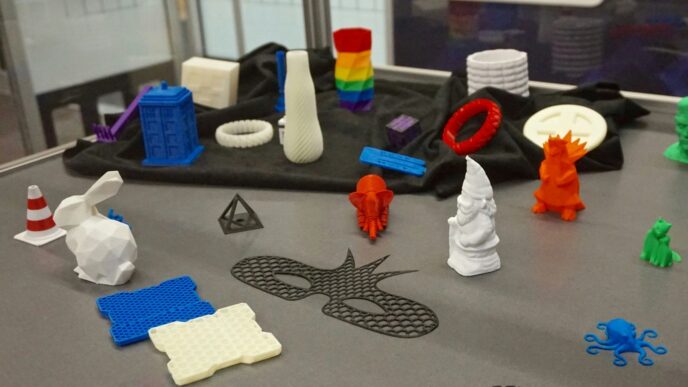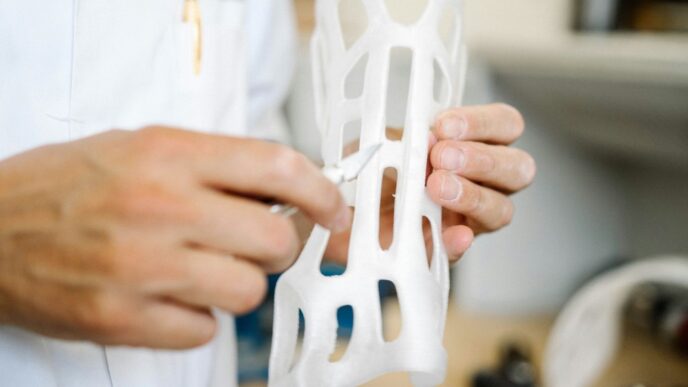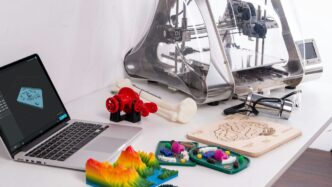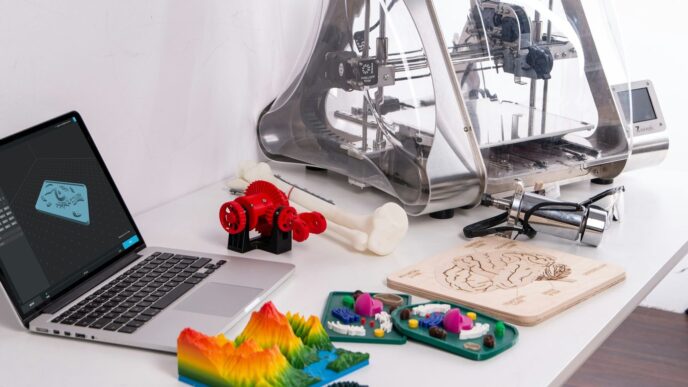Understanding Automated Production Systems
Think of automated production systems as the brains and brawn behind modern manufacturing. They’re setups designed to get jobs done with way less human input. We’re talking about a mix of mechanical parts, electronics, and computer smarts all working together to make things like processing, putting stuff together, checking quality, and moving materials much smoother. The big idea is to make things faster, more consistent, and just plain better.
These systems use sensors to keep an eye on what’s happening in real-time. This info goes to a control system, kind of like the system’s brain, which then tells the mechanical bits – the actuators, like motors or robotic arms – what to do. People can still interact with these systems through special screens, sort of like a dashboard, to check in and make adjustments if needed. Basically, they’re built to handle tough, repetitive jobs without getting tired or making mistakes, which is a huge deal for keeping quality high.
Core Concepts of Industrial Automation
Industrial automation is all about using technology to run factory jobs. It’s not just about robots, though they’re a big part of it. It’s about making processes more efficient and cutting down on the need for people to do the same thing over and over. This means better output, more consistent products, and often, lower costs.
- Efficiency Boost: Tasks get done faster and more reliably.
- Quality Control: Products are made to the same standard every single time.
- Cost Reduction: Less labor, less waste, and fewer errors add up.
- Safety Improvement: Dangerous or repetitive jobs are handled by machines.
Key Components of Automated Production
Automated production systems are made up of several key parts that have to work together. It’s like a well-oiled machine, but with more wires and code.
| Component | Function |
|---|---|
| Control Systems | The ‘brain’ that processes data and sends commands (e.g., PLCs, CNCs). |
| Robotics | Mechanical arms or devices that perform physical tasks like assembly. |
| Sensors | Detectors that gather real-time information about the environment. |
| Actuators | Components that carry out commands, like motors or pneumatic cylinders. |
| Human-Machine Interface (HMI) | Screens and controls for human operators to monitor and interact. |
| Conveyor Systems | Move materials and products between different stages of production. |
Types of Automated Manufacturing Systems
Not all automation is the same. Different systems are suited for different jobs:
- Fixed Automation: This is for when you’re making a ton of the exact same thing, like car parts. The machines are set up for one specific job and don’t change much. It’s super efficient for high volumes but not very flexible.
- Programmable Automation: This type is good for making different products in batches. You can reprogram the machines to handle new designs or product variations. Think of making different kinds of electronics or clothing.
- Integrated Automation: This is the most advanced. It’s where different automated systems are all connected and can even adjust themselves, sometimes using AI. This is what you find in modern ‘smart factories’ where everything works together smoothly.
Foundational Technologies Driving Automation
So, what actually makes all this automation happen? It’s not magic, though sometimes it feels like it. It’s a combination of smart tech working together. Let’s break down some of the key players.
The Role of Programmable Logic Controllers
Think of a Programmable Logic Controller, or PLC, as the brain of a specific machine or a small section of a production line. These are rugged computers designed for industrial environments – you know, the kind with dust, vibrations, and temperature swings. They take in information from sensors (like "is this part in place?" or "is the temperature too high?") and then, based on the program loaded into them, they tell actuators what to do (like "move this arm," "turn on this motor," or "close this valve").
PLCs are programmed using special languages. The most common one is Ladder Logic, which looks a lot like electrical relay circuits. It’s pretty intuitive for folks who understand electrical systems. Other languages include Function Block Diagram, Structured Text, and Sequential Function Charts, each suited for different kinds of tasks. The real power of PLCs lies in their reliability and their ability to make decisions in real-time, keeping things moving smoothly and safely. They are the workhorses that execute the specific instructions for countless automated operations.
Robotics in Automated Production
Robots are probably the most visible part of automation for many people. We’re not just talking about the big, clunky industrial arms of the past, though those are still around and doing important work. Today’s robots are more sophisticated. They can be programmed to do a huge variety of tasks, from picking and placing small components with incredible speed and accuracy to welding car frames or even performing delicate assembly operations.
What makes them so useful?
- Precision: Robots can repeat the same movement thousands of times without getting tired or losing accuracy.
- Speed: They can often perform tasks much faster than a human could.
- Safety: They can handle dangerous jobs, like working with hazardous materials or in extreme temperatures, keeping human workers out of harm’s way.
- Flexibility: With reprogramming, a single robot can often be adapted to perform different tasks, which is a big deal for manufacturers who need to change up their product lines.
Modern robots often have advanced sensors and even machine vision, allowing them to "see" and react to their environment, making them even more capable.
Sensors and Actuators for Real-Time Control
If PLCs are the brains and robots are the muscles, then sensors and actuators are the senses and the nerves. They’re how the automated system interacts with the physical world.
- Sensors: These devices detect physical conditions and convert them into electrical signals that the PLC can understand. Think of temperature sensors, pressure sensors, proximity sensors (to detect if something is nearby), vision sensors (like cameras), and encoders (to measure position or speed). They are constantly feeding data back to the control system.
- Actuators: These are the devices that take action based on the commands from the PLC. They convert electrical signals into physical movement or action. Examples include electric motors, hydraulic and pneumatic cylinders (which create linear motion), valves (to control fluid flow), and robotic grippers. They are what actually do the work.
Together, sensors and actuators create a feedback loop. Sensors gather information about the process, the PLC processes that information and makes a decision, and then actuators carry out the necessary action. This continuous cycle allows for precise control and the ability to adjust operations on the fly, which is pretty neat when you think about it.
Transformative Impact Across Industries

Automated production isn’t just for one or two sectors; it’s shaking things up everywhere. Think about it – from the tiny components in medical devices to the massive machines in mining, automation is changing how things are made and processed.
Automated Production in Life Sciences and Medical Manufacturing
In the world of life sciences and medical manufacturing, precision and cleanliness are everything. Automated systems are a game-changer here. They can handle delicate tasks like assembling tiny medical instruments or packaging pharmaceuticals with incredible accuracy, way more than humans can consistently do. This means fewer errors, better product quality, and importantly, it helps meet strict regulatory standards. For example, a company might use robots to fill vials with medication, ensuring each dose is exact. This reduces the risk of contamination and makes sure patients get what they need, safely. It also speeds up production, so more people can get access to vital treatments faster.
Revolutionizing the Automotive Sector with Automation
The automotive industry has been an early adopter of automation, and it just keeps getting better. You’ve probably seen robots on assembly lines doing welding or painting. But it goes way beyond that now. With things like digital twins, car manufacturers can create a virtual copy of their entire factory and test out new production layouts or processes before they even build anything physically. This saves a ton of time and money, and it helps them figure out the most efficient way to build cars. Plus, AI is helping to design better vehicles and optimize the manufacturing process itself. This ability to virtually test and refine production lines means fewer costly mistakes and faster development of new car models.
Enhancing Mining and Mineral Processing Operations
Mining and mineral processing can be tough, dangerous work. Automation is making it safer and more efficient. Instead of people manually inspecting equipment or collecting samples, sensors and automated systems can do it in real-time. This means companies get instant data on how their operations are running, whether it’s the performance of a drill rig or the efficiency of a sorting process. This data helps them make quick decisions, like adjusting machinery on the fly to get more valuable minerals or to prevent equipment failure. It also means fewer workers have to be in potentially hazardous areas, improving overall safety.
Strategic Advantages of Automated Production
So, why bother with all this automation stuff? Well, it turns out there are some pretty big upsides to letting machines do more of the heavy lifting. For starters, you get way more done. Automated systems don’t need coffee breaks or sleep, so they can keep churning out products around the clock. This means faster production cycles and, ultimately, getting your goods to customers quicker.
Boosting Productivity and Product Quality
Think about it: when a machine does the same task over and over, it’s going to be more consistent than a person who might get tired or distracted. This consistency is a huge win for product quality. You end up with fewer defects and a more uniform product, which customers tend to like. This reduction in errors and increase in output is a major reason companies are looking at automation.
Achieving Cost Efficiencies and Resource Optimization
While setting up automated systems can cost a pretty penny upfront, the long-term savings can be substantial. You’re looking at reduced labor costs, for one. Plus, automated systems are often really good at using materials efficiently, cutting down on waste. This means less money spent on raw materials and less going into the trash bin. It’s a win-win for your wallet and the planet, in a way.
Here’s a quick look at how costs can shift:
| Cost Area | Manual Production | Automated Production | Notes |
|---|---|---|---|
| Labor | High | Lower | Reduced need for repetitive manual tasks |
| Material Waste | Moderate | Low | Precise material handling |
| Energy Consumption | Moderate | Moderate to High | Varies by system, but often optimized |
| Initial Investment | Low | High | Significant upfront capital expenditure |
| Maintenance | Moderate | Moderate to High | Requires specialized technicians |
Enhancing Workplace Safety and Data Analytics
Let’s be honest, some jobs in manufacturing are just plain dangerous. Automated systems can take over those risky tasks, like working with heavy machinery or in hazardous environments. This keeps your human workers safer and healthier. On top of that, these systems collect a ton of data. This data can tell you a lot about how your production line is running, where the bottlenecks are, and how you can make things even better. It’s like having a super-smart assistant that’s always watching and reporting back.
Emerging Trends in Automated Production
The world of automated production isn’t standing still; it’s constantly evolving. New ideas and tech are popping up that are changing how factories work, making them smarter and more adaptable. It’s pretty exciting stuff, honestly.
The Integration of AI and Machine Learning
Artificial intelligence (AI) and machine learning (ML) are really starting to make waves. Think of it like giving machines a brain. They can now look at huge amounts of data from the factory floor, spot patterns we might miss, and even predict when a machine might break down before it actually happens. This means less unexpected downtime, which is a huge win for keeping things running smoothly. Plus, these smart systems can adjust production on the fly if demand changes, making factories way more flexible.
Modular and Plug & Produce Systems
Another big thing is modular automation. Instead of building one giant, fixed system, companies are using smaller, self-contained units that can be easily swapped in or out. This makes it much simpler to change up what you’re making or add new capabilities without a massive overhaul. It’s like building with LEGOs, but for factories. This approach is making advanced automation more accessible, even for smaller businesses, and it speeds up how quickly you can get new products out the door.
Localization and Sustainability Through Automation
There’s a growing push to produce things closer to home and to do it in a way that’s kinder to the planet. Automation plays a big part here. By making local production more efficient and cost-effective, it helps shorten supply chains. Smart factories are also being designed with energy efficiency in mind, using automation to manage power usage better and reduce waste. This combination of local production and eco-friendly practices is shaping the future of manufacturing.
Looking Ahead
So, we’ve gone over how automated production is really changing things across a bunch of different industries. It’s not just about making things faster, though that’s a big part of it. It’s also about making things better, safer, and even more sustainable. While setting up these systems can seem like a big step, the payoff in terms of efficiency and quality is pretty clear. As the technology keeps getting better and easier to use, it’s going to become even more common, helping businesses of all sizes stay competitive and push forward. It’s an exciting time to see how automation continues to shape the future of how we make stuff.


